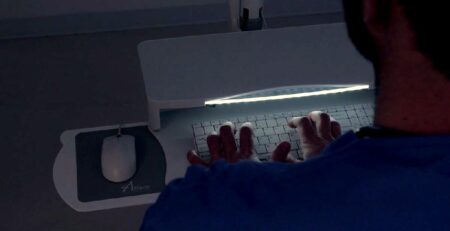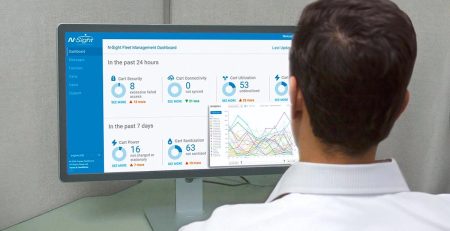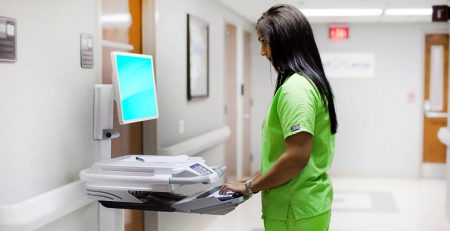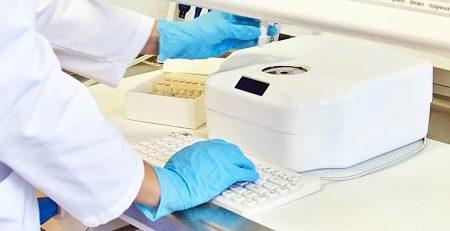Best Practices for EHR Documentation
Electronic Health Records (EHRs) have revolutionized healthcare by streamlining patient information management, improving communication among healthcare providers, and enhancing patient care. However, the effectiveness of EHRs largely depends on how they are utilized, and proper documentation practices play a pivotal role in optimizing their benefits.
In this article, we will delve into the best practices for EHR documentation and highlight how they significantly contribute to improved patient care.
Understanding the Purpose of EHR Documentation
To embark on the journey of effective EHR documentation, it is essential to comprehend the multifaceted purposes it serves. EHR documentation isn’t merely a record-keeping task; it is a fundamental element of patient care that affects diagnosis, treatment, and overall healthcare outcomes.
1.) Accurate Clinical Decision-Making
Effective EHR documentation provides healthcare providers with comprehensive patient data, including medical history, allergies, medications, and recent test results. This wealth of information empowers clinicians to make informed and accurate decisions, which directly influence patient care. For example, knowing a patient’s allergy history can prevent potentially life-threatening medication errors.
EHR documentation involves the use of electronic devices like tablets for recording patient information right at the patient’s bedside. Point of care (POC) solutions may encompass various options, such as hospital computer carts, computer mounting systems, or medical carts like the Avalo Medical Carts from Capsa Healthcare.
2.) Seamless Care Coordination
When EHR documentation is standardized and well-organized, it facilitates seamless care coordination among different healthcare providers and specialties. Specialists can access a patient’s complete medical history, reducing redundant tests and treatments, which not only improves patient care but also reduces healthcare costs.
3.) Patient Engagement
EHRs can empower patients to take an active role in their healthcare. When patients can access their EHRs, review their medical history, and understand treatment plans, it fosters a sense of engagement and collaboration. Informed patients are more likely to adhere to treatment regimens and actively participate in their care.
Best Practices for Effective EHR Documentation
Now, let’s look into the best practices for EHR documentation, emphasizing how each practice contributes to better patient care.
1. Real-Time Documentation
Documenting patient encounters in real-time is essential for accuracy and immediate decision-making. Delayed or retrospective documentation can lead to errors, omissions, and miscommunications that may negatively impact patient care. When healthcare providers document in real-time, they ensure that the patient’s chart is always up-to-date and reflective of the most recent information.
2. Structured Data Entry
Structured data entry methods, such as dropdown menus, checkboxes, and predefined fields, enhance EHR documentation’s accuracy and efficiency. This approach minimizes the likelihood of typographical errors and ensures that essential information is consistently captured. Structured data also facilitates data analysis, allowing healthcare providers to identify trends and potential health risks more easily.
3. Focusing on Relevance
Effective EHR documentation is about capturing relevant information. Healthcare providers should avoid excessive copying and pasting from previous notes, as this can lead to cluttered records filled with irrelevant data. Each entry should pertain specifically to the patient encounter and contribute directly to the patient’s care plan, promoting a more efficient and focused approach to treatment.
4. Correcting Errors Transparently
Mistakes in EHR documentation can have serious consequences for patient care. Transparently correcting errors and maintaining an audit trail of changes is vital. This practice ensures that healthcare providers and other authorized personnel can easily identify and understand corrections made to the patient’s record. Clear documentation of errors and corrections also supports transparency and accountability in patient care.
5. Ensuring Privacy and Security
Maintaining the privacy and security of patient information is not just a legal requirement (as mandated by HIPAA), but it also directly impacts patient care. Patients must trust that their health information is kept confidential and secure. Breaches of privacy can erode patient trust and may even lead to patients withholding crucial information, which could impede accurate diagnosis and treatment.
“The implementation of EHR documentation best practices is essential to ensure the delivery of high-quality patient care. Nevertheless, harnessing cutting-edge technological solutions can greatly enhance the efficiency and precision of these practices.”
6. Using Descriptive Language
Clear and descriptive language is vital in EHR documentation. Using unambiguous terms and descriptions helps ensure that healthcare providers can easily understand the patient’s condition and treatment plan. Ambiguity or vague language can lead to misinterpretation and potentially harmful decisions.
7. Incorporating Patient Information
Effective EHR documentation includes not only clinical data but also relevant patient information. This encompasses details such as social determinants of health, patient preferences, and psychosocial factors that may impact healthcare decisions. This holistic approach to documentation ensures a more comprehensive understanding of the patient’s health and aids in tailoring care plans to individual needs.
8. Maintaining Chronological Order
EHR entries should be maintained in chronological order to create a clear timeline of the patient’s medical history. A chronological view helps healthcare providers track the patient’s progress, identify trends, and make informed decisions based on the sequence of events. This practice is particularly crucial when managing chronic conditions or following up on complex medical histories.
9. Limiting Abbreviations
While abbreviations may save time, they can also lead to miscommunication and errors in patient care. It is essential to limit the use of abbreviations, especially non-standard ones. If abbreviations are necessary, a standardized list within the EHR system can mitigate confusion and improve clarity.
10. Reviewing and Signing Entries
Before validating entries, healthcare providers should diligently review their documentation for accuracy and completeness. Electronic signatures serve not only to authenticate the authorship of the documentation but also as a testament to the provider’s accountability for the care delivered. Errors or omissions in documentation can be addressed promptly before they impact patient care.
11. Consistency with Paper Records
In situations where healthcare organizations maintain both electronic and paper records, it is crucial to ensure that electronic documentation mirrors the format and content of paper records. This consistency enables a seamless transition between systems and ensures continuity of care, enhancing patient safety.
12. Staff Training and Education
Providing ongoing training and education to healthcare professionals is essential for effective EHR documentation. Continuous learning ensures that providers are proficient in using the EHR system effectively and aligning their documentation practices with best practices and organizational standards. Well-trained staff are better equipped to provide high-quality care.
13. Enhancing Communication
EHR systems offer a platform for secure communication among healthcare team members. Effective communication through EHRs improves care coordination and ensures that all relevant healthcare providers are informed about important updates, test results, and treatment plans. Timely communication fosters collaboration and helps prevent errors or delays in patient care.
14. Avoiding Copy-Pasting for Cloning
Copying and pasting large sections of text, also known as cloning, can compromise the accuracy of EHR documentation. Each patient encounter is unique, and documentation should reflect this by tailoring the information to the specific context. Avoiding excessive copying and pasting ensures that patient care is personalized and appropriate for each situation.
15. Being Mindful of Legal Implications
EHR documentation carries legal implications. Accurate and comprehensive records can protect healthcare providers in legal disputes, while incomplete or erroneous documentation can have adverse consequences. Awareness of the legal ramifications underscores the importance of precise and thorough EHR documentation in safeguarding patient care.
16. Conducting Regular Audits
Regular audits of EHR documentation are essential to ensure compliance with organizational policies, regulatory requirements, and best practices. Audits help maintain data integrity and quality, contributing to accurate patient records and, consequently, improved patient care.
Point of Care Solutions from Convergint-IMS
The implementation of EHR documentation best practices is essential to ensure the delivery of high-quality patient care. Nevertheless, harnessing cutting-edge technological solutions can greatly enhance the efficiency and precision of these practices.
At Convergint-IMS, we harness innovative technology to provide adaptable and dependable point-of-care solutions. These solutions are designed to streamline workflow processes and facilitate seamless communication between patients and healthcare teams. Featuring a user-friendly interface and robust capabilities, our solutions enable you to access and record patient information directly at the point of care, thereby enhancing accuracy, timeliness, and ultimately, the overall outcomes of patient care.
Medical Equipment & Healthcare Solutions
Connect with Convergint at (800) 968-3135 to learn more about our commitment to delivering exceptional results to our customers through unparalleled customer service.

















